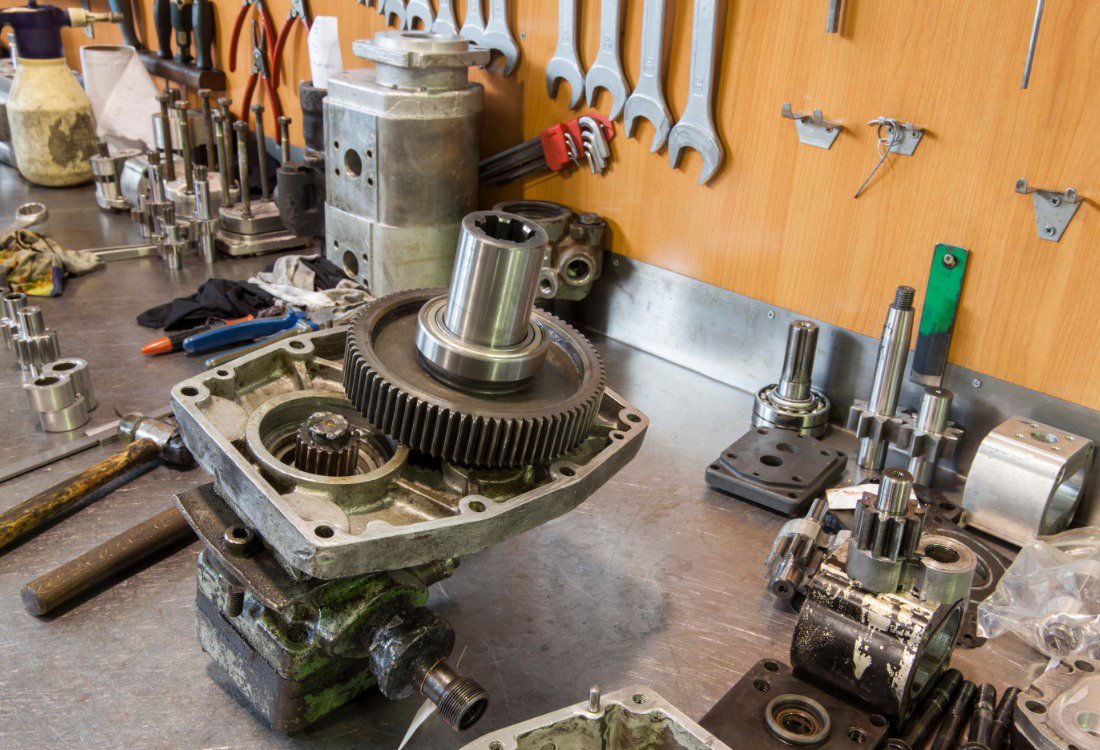Fluid power is something of an ‘evergreen’ industry, with many core technologies and processes having been used successfully for many decades or even centuries. Nevertheless, the last couple of decades have seen significant developments in hydraulic engineering, with innovations marching in step with the increased demand among customers for greater efficiency and a lower carbon footprint, among other factors.
In 2025, the focus of innovation largely remains on digitalisation, energy efficiency, and sustainable materials – three pillars that are shaping the future of the sector. This article dives into the cutting-edge trends that are redefining hydraulic engineering, with insights on how these innovations impact the day-to-day hydraulic components used in your applications.
1. Digitalisation In Hydraulic Engineering
The integration of digital technologies within hydraulic systems is accelerating, transforming operations and enabling new capabilities. IoT (Internet of Things) analytics and monitoring solutions, for instance, are now cornerstones for many modern hydraulic setups, providing real-time insights, allowing a more responsive approach to predictive maintenance, and enhancing operational transparency.
Smart Hydraulics And Iot
Smart hydraulic systems leverage IoT-enabled sensors to monitor important parameters—pressure, flow, temperature—and transmit data to centralised platforms for analysis. This level of visibility helps engineers predict failures before they occur, reducing downtime and lowering maintenance costs. This affects applications at the component level, as well as the strategic, operational level. For example:
- Industrial hoses equipped with embedded sensors now alert engineers to potential leaks or wear points, ensuring preventive action can be taken before an industrial hose failure disrupts operations.
- Within UK industries utilising hydraulic fittings, IoT technology facilitates remote diagnostics, enabling quicker responses to system inefficiencies and failure points.
Digital Twin Technology
Digital twin technology is also gaining traction among design engineers, with wide-ranging benefits to the types of applications that can be developed using fluid power technology. A digital ‘twin’ creates a virtual replica of a hydraulic system within a CAD-type software platform, allowing engineers to simulate and optimise system performance before implementation. This reduces costly trial-and-error approaches in the workshop and enhances decision-making.
Hydraulic Cylinder Innovations
IoT-enabled hydraulic systems have already shown significant benefits in sectors like manufacturing and construction, even when applied to purely mechanical or traditional hydraulic systems. For instance, hydraulic excavators equipped with IoT sensors can provide machine operators with detailed feedback, ensuring optimal performance while extending the lifespan of critical components such as hydraulic cylinders and fittings.
Digitalisation not only improves efficiency but also aligns hydraulic engineering with Industry 4.0, a major developmental framework for industrial automation and data exchange.
2. Energy Efficiency
Energy consumption remains a crucial issue for many hydraulic systems, particularly since energy-intensive operations can significantly impact both operating costs and carbon footprints. Fortunately, the shift toward more energy-efficient hydraulic components and designs is redefining how fluid power engineers approach their projects. What’s on the cards in 2025?
Advanced Components And Systems
The adoption of variable displacement pumps, servo motors, and advanced control valves is now widespread, offering increased precision and energy efficiency. These components adjust fluid flow and pressure dynamically based on system demand, minimising unnecessary energy use.
For instance:
- Hydraulic cylinders paired with energy-efficient pumps significantly reduce energy waste, halving the power requirements for applications like presses or industrial automation machinery.
- Upgraded hydraulic fittings made from lightweight yet durable materials improve flow efficiency, ensuring systems run more effectively while conserving resources.
Hybrid Hydraulics
So-called ‘hybrid systems’, combining hydraulic power with electrical components, are also becoming more prevalent. By selectively integrating electrical drives with traditional hydraulics, systems can achieve high energy efficiency without sacrificing the immense power that hydraulics delivers. Hybridisation is particularly beneficial in mobile machinery, such as agricultural equipment and construction plant, where energy and fuel conservation is important.
3. Sustainability
With growing environmental awareness, the hydraulic industry is racing towards sustainability, with strong implications for the materials used in hydraulic fittings and components.
Eco-friendly materials
Hydraulic engineers are increasingly sourcing components made from more sustainable materials, such as recycled alloys and bio-based polymers. These materials help drive down embodied carbon, aligning hydraulic systems with the circular economy model. For example:
- Industrial hoses produced using sustainable rubber formulations are reducing the environmental impact of natural rubber extraction and processing without compromising durability.
- Eco-friendly hydraulic fittings made from high-performance recycled metals are helping to decrease material waste and lower costs at the manufacturing stage.
Modular component design
Modularity plays a key role in promoting sustainability. Hydraulic systems designed with interchangeable, ‘plug and play’ components simplify maintenance and reduce waste. Replacing individual hydraulic fittings as needed rather than entire assemblies extends the system’s lifespan, minimising material disposal and the burden of recycling.
What Next?
Sustainability, energy efficiency, and the digital transformation are transforming the hydraulic engineering sector at many different levels. To keep on top of the latest trends and to maximise the value and productivity of your applications, please contact one of the team at Hydrastar today for advice, or to discuss your next project.
Image source: Canva


